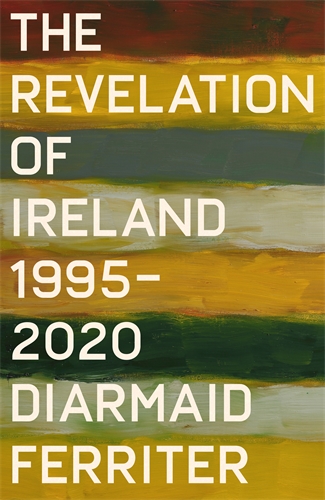DIARMAID FERRITER
Profile Books
£25
ISBN 9781800810945
REVIEWED BY
Brian Girvin
Brian Girvin is Honorary Professor of Contemporary Politics at the University of Glasgow.

Most people reading Diarmaid Ferriter’s new book will have encountered at least some of the incidents and controversies detailed here but will have done so from very different perspectives. The one thing on which they are likely to agree is that the period was one of remarkable change, whether for good or ill. Key themes include party politics; economic success and failure; the European Union and neutrality; Church and State; institutional abuse; and social and cultural change. Ferriter draws on a wide range of sources to provide the reader with a fast-paced narrative of this recent past.
Ferriter tells his readers that the book is ‘an attempt to make sense of the scale and texture of those changes and endurances through a longer historical lens’. He is in competition with journalists and social scientists who also provide compelling accounts of this period. The historical perspective must provide an alternative reading to the immediacy of journalism or the absence of longer-term perspectives in the social sciences. How well is this done? On balance, the author is successful in providing a narrative of events while reflecting on longer-term factors that continue to affect the present.
For someone born in 1950 or 1960 the political and social landscape has changed out of all recognition. Most dramatically, the peace process in Northern Ireland led to the Belfast/Good Friday Agreement, which ended the violence that had traumatised Ireland and Britain for three decades. The role of the Catholic Church has been seriously compromised owing to clerical sexual abuse, cover-ups and the defensiveness of Church authorities in responding to these matters. Ferriter’s conclusion that the damage done to women in mother and child homes was immeasurable is persuasive. The marriage equality referendum in 2015 and the repeal of the Eighth Amendment in 2018 demonstrated the extent to which Ireland had become a tolerant and liberal society when compared to the previous hundred years.
During this time Ireland became a wealthy country by international standards. Per capita income is now close to that of affluent northern European EU members. Though wealth is unevenly divided, the author highlights the extent of upward mobility as a consequence of economic change, especially among poorer sections of society. One unintended consequence of this was that Ireland ceased to be a homogeneous ethno-religious monoculture in a very short period of time, becoming one that includes 180 nationalities with numerous languages and religions. This has caused tension in recent years, yet on balance Ferriter concludes that the country has handled immigration quite well. The other major change is the collapse of Fianna Fáil’s vote at the 2011 general election. The party’s failure to address the banking crisis, which led to the bail-out, the Troika and severe austerity, undermined its political dominance for the first time since 1932.
Ireland is now a very different place when compared to 1995, never mind 1950. While change is central to this story, historians also pay close attention to continuity. This book and Ferriter’s observations prompt a number of reflections on the extent and importance of continuity within change. Economic policy has not changed over the past 50 years. Ireland remains dependent on attracting investment from mainly American multinational companies and the tax they pay. Irish foreign policy continues to be based on neutrality and membership of the European Union. Neutrality remains a symbol of sovereignty, yet its application or defence remains problematic in a rapidly changing security environment. Ireland’s sovereignty has been seriously eroded by the intervention of the European Commission, the ECB and the IMF in response to the economic and banking crisis. The Irish recovery made it the poster-boy for successful crisis management within the EU, but the political cost was dependency on the EU. The bail-out, austerity and Brexit have undermined Mary Harney’s assertion that Ireland was closer to Boston than Berlin. The new reality is that, for better or worse, Ireland is deeply integrated into the political and economic system dominated by Paris, Berlin and Brussels. Ireland made this choice in the 1970s and recent developments have not changed this reality or the reasons for it.
Notwithstanding the changes to Articles 2 and 3 of the constitution, Irish public opinion remains irredentist in respect of partition and unionist opinion. Polling in the Republic reports that majorities are unwilling to compromise on most nationalist symbols to assuage unionist concerns over the possibility of a united Ireland. Nor has the political system changed significantly since 2011. Subsequent elections have reinforced the moderate-conservative mainstream of Irish politics, demonstrated by the success of the Fine Gael/Fianna Fáil/Green Party coalition and Fianna Fáil’s success at the 2024 general election. Another aspect of continuity is the continuing weakness of left-wing politics in Ireland. There are various reasons for this, but a major contributory factor is the national and nationalist basis of mainstream politics. Indeed, the three largest parties are nationalist and have their origins in the Civil War and its aftermath.
Readers will take different lessons from ithis book. Perhaps the most important is that the period since 1995 constitutes a break with the past, and this in turn provides the opportunity for further change.
